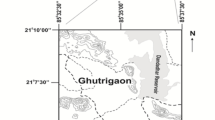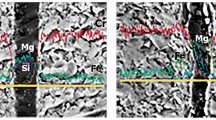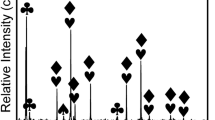Abstract
Chrome ore concentrate consists of high-temperature melting oxides such as Cr2O3, MgO, and Al2O3. The presence of these refractory constituents makes the ore a very high melting mineral. Hence, it is difficult to produce sinter from chrome ore by a pyrometallurgical route. Currently, chrome ore is ground to below 75 μm, pelletized, heat hardened through carbothermic reaction at 1300 °C to 1400 °C, and then charged into a submerged electric arc furnace (EAF), along with lumpy ore for ferrochrome/charge-chrome production. Electricity is a major cost element in this extraction process. This work explores the sinterability of chrome ore. The objective of this study was to: (1) determine whether chrome ore is sinterable and, if so, (2) ascertain ways of achieving satisfactory properties at a low temperature of sintering. Sintering of the raw material feed could be a way to reduce electricity consumption, because during sintering a partial reduction of minerals is expected along with agglomeration. Studies carried out by the authors show that it is possible to agglomerate chrome ore fines through sintering. The chrome ore sinter thus produced was found to be inferior in strength, comparable to that of an iron ore sinter, but strength requirements may not be the same for both. Because the heat generation during chrome ore sintering is high owing to some exothermic reactions, compared with iron ore, and because chrome ore contains a high amount of fines, shallow-bed-depth sinter cake production was attempted in the laboratory-scale pot-sintering machine. The sintered product was found to be a good conductor of electricity because of the presence of phases such as magnetite and maghemite. This characteristic of the chrome ore sinter will subsequently have a favorable impact in terms of power consumption during the production of ferrochrome in a submerged EAF. The sinter made was melted in the arc furnace and it was found that the specific melting energy is comparable to that of heat-hardened chrome ore pellets but lower than briquettes and lump ore.























Similar content being viewed by others
References
Z. Deqing, L. Jian and H. Aoping: Int. J. Miner. Process., 2008, vol. 86 (1–4), pp. 58–67.
V.D. Eisenhuttenleute: Slag Atlas, Verlag Stahleisen, Duesseldorf, Germany, 1981.
M. Hino, K.-I. Higuchi, T. Nagasaka, and S. Ban-Ya: Metall. Mater. Trans. B, 1998, vol. 29B, pp. 351–60.
P.A. Miles, W.B. Westpall, and A. Von Hippel: Rev. Mod. Phys., 1957, vol. 29, p. 279.
Acknowledgments
The authors gratefully acknowledge the help rendered by Messrs. S.S.N. Chand and P.K. Mishra for their useful consultations. The authors also acknowledge Messrs. S.K. Bakshi, Kishore, and S. Tiwary for their help in carrying out the tests.
Author information
Authors and Affiliations
Corresponding author
Additional information
Manuscript submitted March 15, 2008.
Rights and permissions
About this article
Cite this article
Nandy, B., Chaudhury, M.K., Paul, J. et al. Sintering Characteristics of Indian Chrome Ore Fines. Metall Mater Trans B 40, 662–675 (2009). https://doi.org/10.1007/s11663-009-9268-5
Published:
Issue Date:
DOI: https://doi.org/10.1007/s11663-009-9268-5




